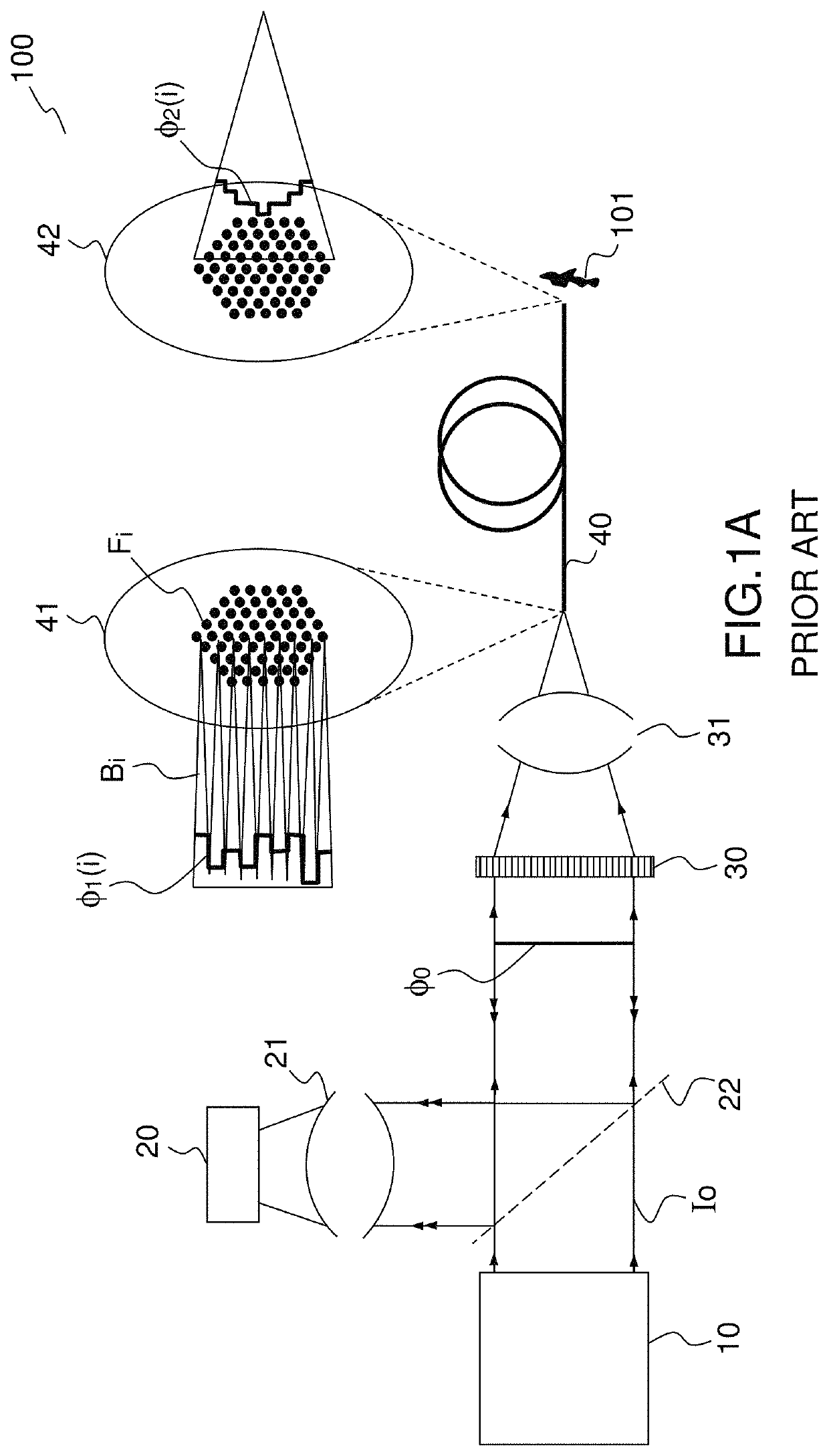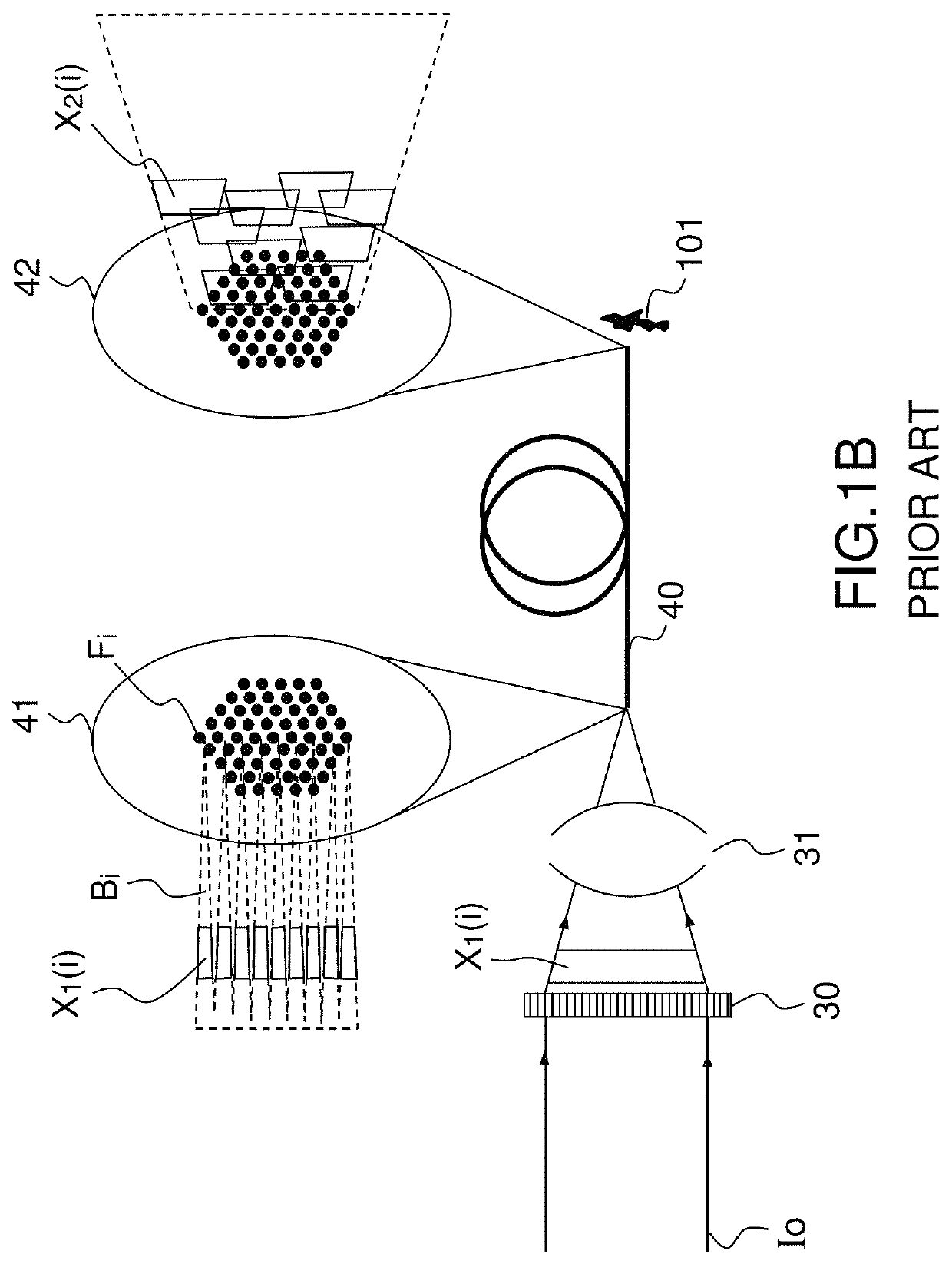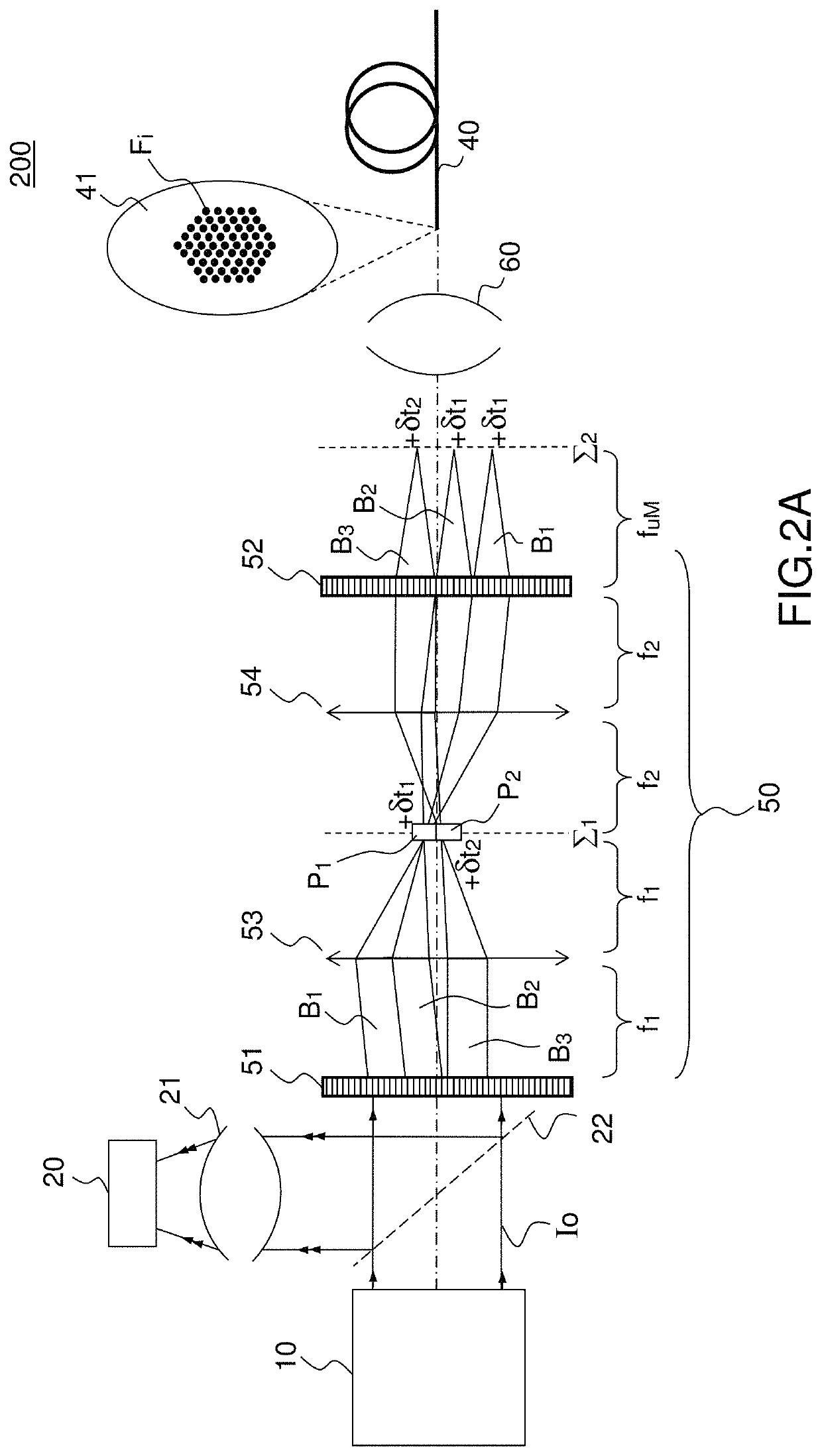Device and method for controlling group velocity delays of pulses propagating in monomode optical fibers of a fiber bundle
a monomode optical fiber and group velocity delay technology, applied in the direction of cladded optical fibre, instruments, optical elements, etc., can solve the problems of difficult control of the imaging plane along the optical axis, inability to design a miniature microscope comprising a light source, a focusing lens, and a camera at the distal end (that is, located at the end of the fiber, side with the specimen) of a medical endoscope,
- Summary
- Abstract
- Description
- Claims
- Application Information
AI Technical Summary
Benefits of technology
Problems solved by technology
Method used
Image
Examples
Embodiment Construction
In the figures, the identical elements are indicated by the same references.
FIGS. 2A and 2B illustrate schematically a system 200 of “lensless” endo-microscopic imaging according to the present description as well as the principle of its implementation.
The system 200 generally comprises an emission path, with a light source 10 for the emitting of ultrashort light pulses I0, typically less than a picosecond, for example between 100 femtoseconds and a picosecond, and a detection path adapted to detect the light intended to pass through the bundle of monomode optical fibers 40 from its distal end to its proximal end. The light detected is, for example, the light coming from the nonlinear process in the specimen after excitation. The detection path comprises a lens 21 and a detector 20 and it is separated from the emission path by a separating plate 22, such as a dichroic plate in the case of nonlinear imaging applications in which the detection wavelength (for example, two-photon fluor...
PUM
| Property | Measurement | Unit |
|---|---|---|
| diameter | aaaaa | aaaaa |
| diameter | aaaaa | aaaaa |
| diameter | aaaaa | aaaaa |
Abstract
Description
Claims
Application Information
 Login to View More
Login to View More - R&D
- Intellectual Property
- Life Sciences
- Materials
- Tech Scout
- Unparalleled Data Quality
- Higher Quality Content
- 60% Fewer Hallucinations
Browse by: Latest US Patents, China's latest patents, Technical Efficacy Thesaurus, Application Domain, Technology Topic, Popular Technical Reports.
© 2025 PatSnap. All rights reserved.Legal|Privacy policy|Modern Slavery Act Transparency Statement|Sitemap|About US| Contact US: help@patsnap.com



